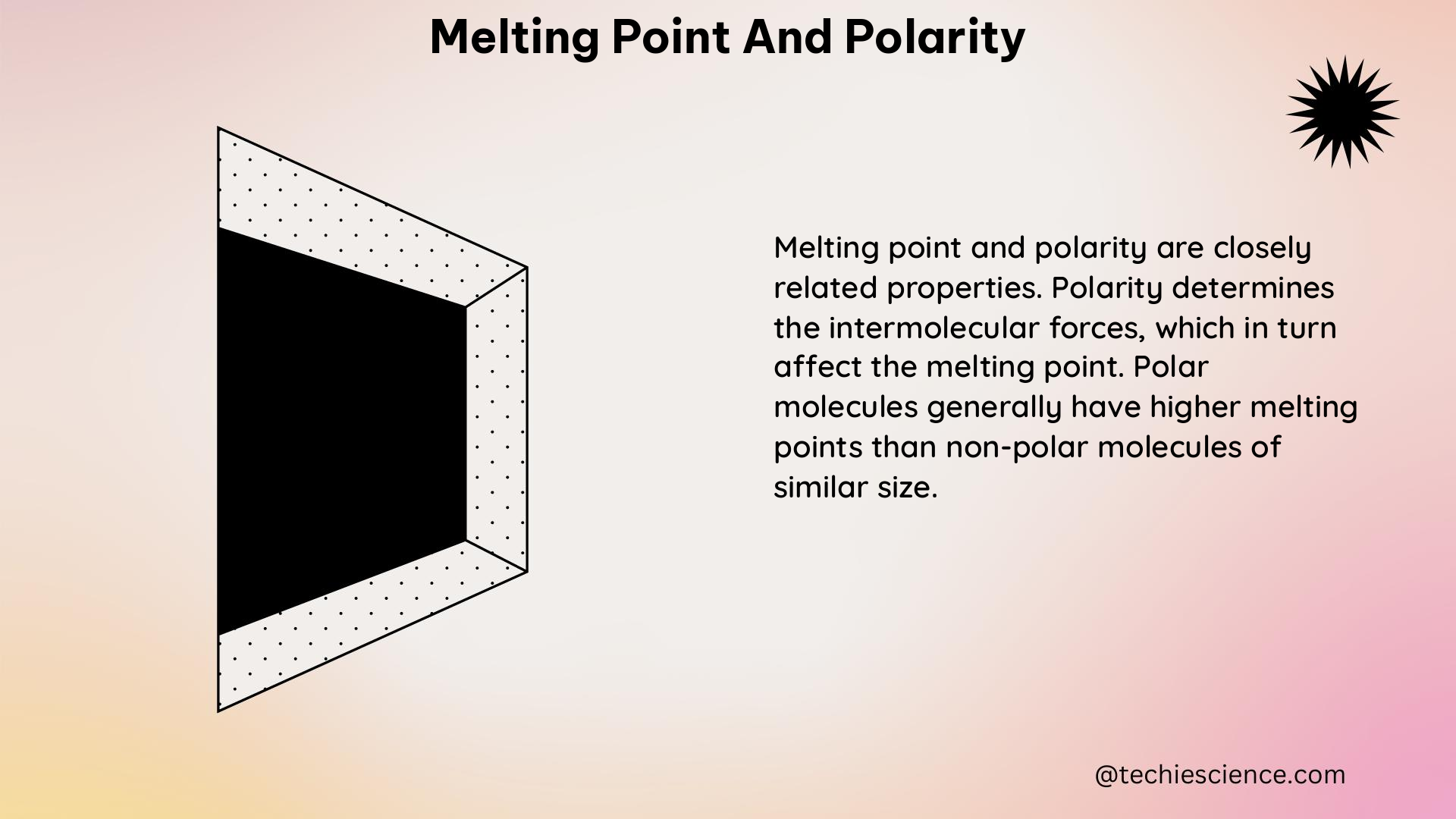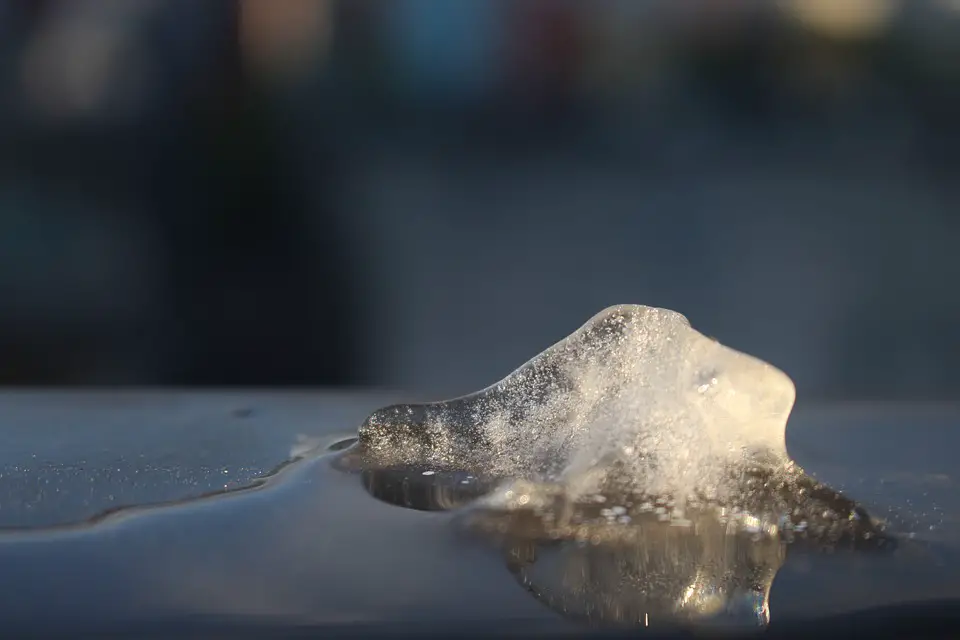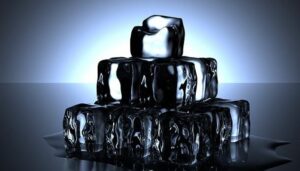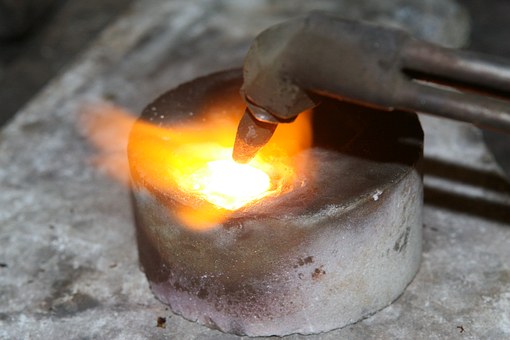Melting point and conductivity are two fundamental physical properties that play a crucial role in the understanding and application of materials in various scientific and engineering domains. This comprehensive guide delves into the intricacies of these properties, providing a detailed exploration of their principles, measurement techniques, and practical implications.
Understanding Melting Point
Melting point is the temperature at which a solid substance transitions from a solid state to a liquid state under standard atmospheric pressure. This phase change is a characteristic property of a pure substance and is independent of the amount of the substance. The melting point is a crucial parameter in various applications, such as materials processing, phase change materials, and thermal management systems.
Factors Affecting Melting Point
The melting point of a substance can be influenced by several factors, including:
-
Chemical Composition: The chemical structure and bonding of a substance can significantly impact its melting point. For example, ionic compounds generally have higher melting points than covalent compounds due to the stronger intermolecular forces.
-
Molecular Structure: The shape and size of the molecules in a substance can affect the packing efficiency and the strength of intermolecular interactions, which in turn influence the melting point.
-
Pressure: Increasing the pressure on a substance can raise or lower its melting point, depending on the volume change during the phase transition. This relationship is described by the Clausius-Clapeyron equation.
-
Impurities: The presence of impurities in a substance can alter its melting point, either by lowering it (eutectic effect) or raising it (solid solution formation).
Measuring Melting Point
Melting point can be measured using various techniques, including:
-
Capillary Tube Method: In this method, a small sample of the substance is placed in a sealed capillary tube, and the temperature at which the substance begins to melt is observed.
-
Differential Thermal Analysis (DTA): DTA measures the temperature difference between a sample and a reference material as they are heated or cooled, allowing the identification of phase transitions.
-
Differential Scanning Calorimetry (DSC): DSC measures the heat flow into or out of a sample as it is heated or cooled, providing information about phase changes and thermal properties.
-
Hot-Stage Microscopy: This technique combines a microscope with a heating stage, allowing the direct observation of the melting process and the determination of the melting point.
Melting Point Data and Applications
Melting point data is essential for various applications, including:
-
Materials Selection: Knowing the melting point of a material is crucial in selecting the appropriate material for a specific application, such as high-temperature environments or phase change materials.
-
Phase Diagrams: Melting point data is used to construct phase diagrams, which provide a visual representation of the stable phases of a substance under different temperature and pressure conditions.
-
Thermal Management: Melting point information is vital in the design of thermal management systems, such as heat sinks, phase change materials, and thermal energy storage devices.
-
Chemical Identification: The melting point of a substance can be used as a characteristic property for its identification and purity determination.
Exploring Conductivity
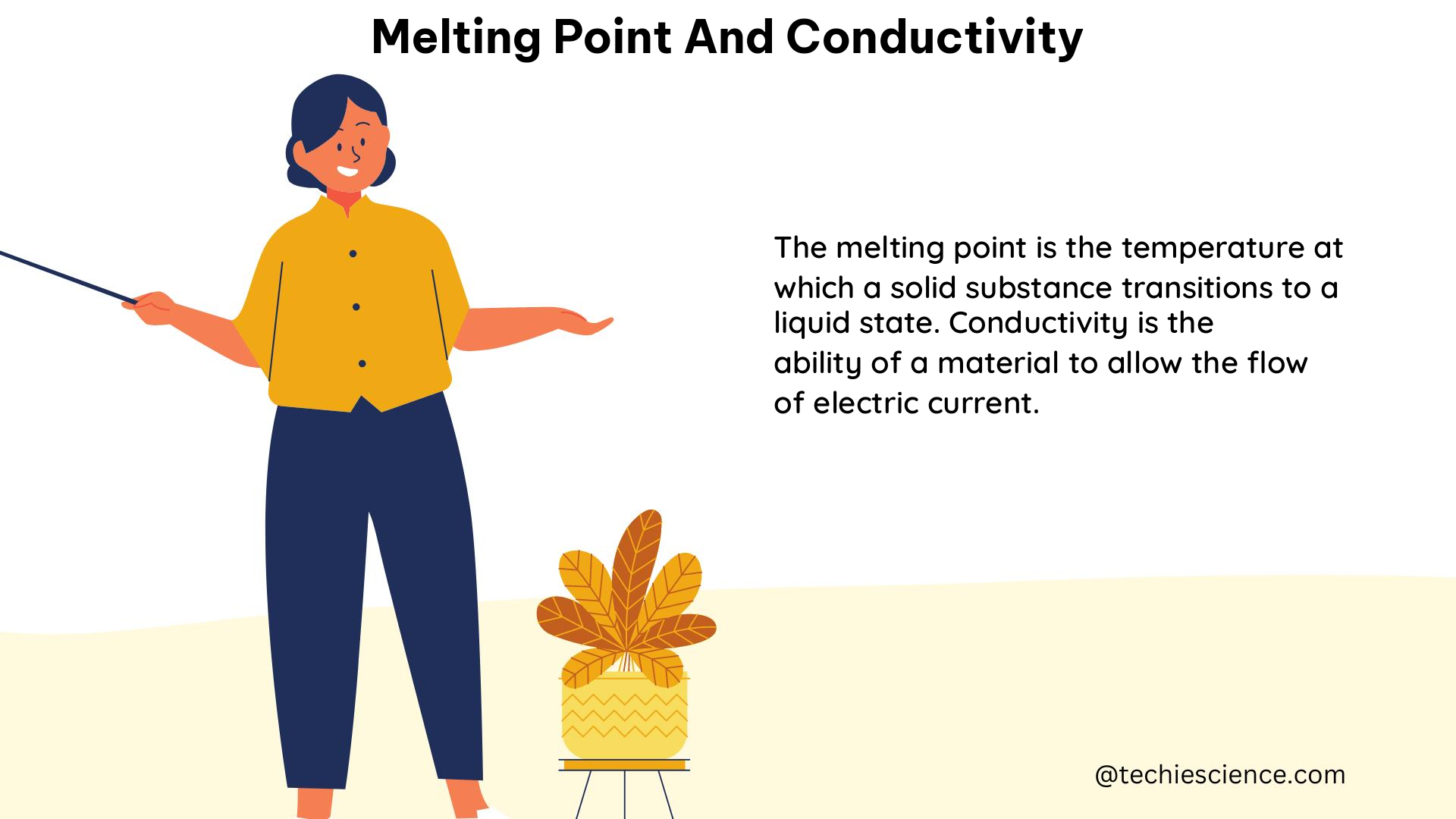
Conductivity is a measure of a material’s ability to conduct heat or electricity. There are two main types of conductivity: thermal conductivity and electrical conductivity.
Thermal Conductivity
Thermal conductivity is a measure of a material’s ability to conduct heat. It is denoted by the symbol k, λ, or κ and is measured in watts per meter kelvin (W/m·K). Thermal conductivity is an important property in applications such as heat transfer, insulation, and thermal management.
Factors Affecting Thermal Conductivity
The thermal conductivity of a material can be influenced by several factors, including:
- Atomic/Molecular Structure: The arrangement and bonding of atoms or molecules in a material can affect its ability to conduct heat.
- Phase Changes: Thermal conductivity can change abruptly when a material undergoes a phase change, such as the transition from solid to liquid.
- Temperature: The thermal conductivity of a material can vary with temperature, often increasing or decreasing as the temperature changes.
- Porosity and Defects: The presence of pores, voids, or other structural defects in a material can significantly reduce its thermal conductivity.
Measuring Thermal Conductivity
Thermal conductivity can be measured using various techniques, such as:
- Steady-State Methods: These methods, like the guarded hot plate or the heat flow meter, measure the heat flux through a sample under steady-state conditions.
- Transient Methods: These methods, like the hot wire or the laser flash, measure the temperature response of a sample to a transient heat input.
- Comparative Methods: These methods, like the divided bar or the thermal comparator, compare the thermal conductivity of a sample to a reference material.
Electrical Conductivity
Electrical conductivity is a measure of a material’s ability to conduct electricity. It is denoted by the symbol σ and is measured in siemens per meter (S/m). Electrical conductivity is a crucial property in various applications, such as electronics, energy storage, and electrical power transmission.
Factors Affecting Electrical Conductivity
The electrical conductivity of a material can be influenced by several factors, including:
- Atomic/Molecular Structure: The arrangement and bonding of atoms or molecules in a material can affect the mobility and concentration of charge carriers, which determines the electrical conductivity.
- Impurities and Defects: The presence of impurities or structural defects in a material can either increase or decrease its electrical conductivity, depending on their effect on charge carrier mobility and concentration.
- Temperature: The electrical conductivity of a material can vary with temperature, often decreasing as the temperature increases due to increased scattering of charge carriers.
- Applied Electric Field: The application of an external electric field can affect the movement of charge carriers, leading to changes in the material’s electrical conductivity.
Measuring Electrical Conductivity
Electrical conductivity can be measured using various techniques, such as:
- Four-Point Probe Method: This method uses four probes to measure the voltage drop across a sample while a known current is applied, allowing the calculation of the material’s electrical conductivity.
- Van der Pauw Method: This method uses a simple sample geometry and four contacts to determine the sheet resistance and, subsequently, the electrical conductivity of a material.
- Impedance Spectroscopy: This technique measures the impedance of a material over a range of frequencies, providing information about its electrical properties, including conductivity.
Conductivity Data and Applications
Conductivity data, both thermal and electrical, is essential for a wide range of applications, including:
- Materials Selection: Knowing the conductivity of a material is crucial in selecting the appropriate material for applications such as heat sinks, electrical wiring, and thermal insulation.
- Device Design: Conductivity data is used in the design of various devices, such as electronic circuits, heat exchangers, and thermoelectric generators.
- Energy Efficiency: Conductivity properties play a significant role in the development of energy-efficient systems, such as building insulation, refrigeration, and power transmission.
- Characterization and Identification: Conductivity measurements can be used to characterize the properties of materials and identify unknown substances.
Numerical Examples and Data
To illustrate the concepts of melting point and conductivity, let’s consider some numerical examples and data:
Melting Point Examples
- Copper (Cu): The melting point of pure copper is 1,084.62°C (1,983.32°F).
- Water (H2O): The melting point of water at standard atmospheric pressure is 0°C (32°F).
- Sodium Chloride (NaCl): The melting point of pure sodium chloride (table salt) is 801°C (1,474°F).
Thermal Conductivity Examples
- Copper (Cu): The thermal conductivity of pure copper at 20°C is 401 W/m·K.
- Water (H2O): The thermal conductivity of water at 20°C is 0.598 W/m·K.
- Polystyrene Foam: The thermal conductivity of polystyrene foam at 20°C is approximately 0.035 W/m·K.
Electrical Conductivity Examples
- Copper (Cu): The electrical conductivity of pure copper at 20°C is approximately 59.6 MS/m (megasiemens per meter).
- Aluminum (Al): The electrical conductivity of pure aluminum at 20°C is approximately 37.8 MS/m.
- Glass: The electrical conductivity of glass is typically in the range of 10^-12 to 10^-8 S/m, depending on the glass composition.
These examples demonstrate the wide range of melting point and conductivity values for different materials, highlighting the importance of understanding and applying these properties in various scientific and engineering applications.
Conclusion
Melting point and conductivity are fundamental physical properties that play a crucial role in the understanding and application of materials. This comprehensive guide has explored the principles, measurement techniques, and practical implications of these properties, providing a valuable resource for physics students and professionals.
By mastering the concepts of melting point and conductivity, you can gain a deeper understanding of material behavior, optimize the design and performance of various systems, and contribute to the advancement of scientific and technological innovations.
References
- Chem. LibreTexts. (2023-07-07). Properties of Matter – Chemistry LibreTexts. Retrieved from https://chem.libretexts.org/Bookshelves/General_Chemistry/Map:_Chemistry_-_The_Central_Science_(Brown_et_al.)/01:_Introduction_-_Matter_and_Measurement/1.03:_Properties_of_Matter
- Thermtest. (n.d.). Thermal Conductivity – What It Is and It’s Formula – Thermtest. Retrieved from https://thermtest.com/what-is-thermal-conductivity
- Cerritos College. (Summer 2017). ELECTRICAL CONDUCTIVITY. Retrieved from https://www.cerritos.edu/chemistry/_includes/docs/Chem_111/Lab/Exp11_ELECTRICAL.CONDUCTIVITY.Sum17.pdf
- Callister, W. D., & Rethwisch, D. G. (2020). Materials Science and Engineering: An Introduction (10th ed.). Wiley.
- Incropera, F. P., Dewitt, D. P., Bergman, T. L., & Lavine, A. S. (2007). Fundamentals of Heat and Mass Transfer (6th ed.). Wiley.
- Kittel, C. (2005). Introduction to Solid State Physics (8th ed.). Wiley.
